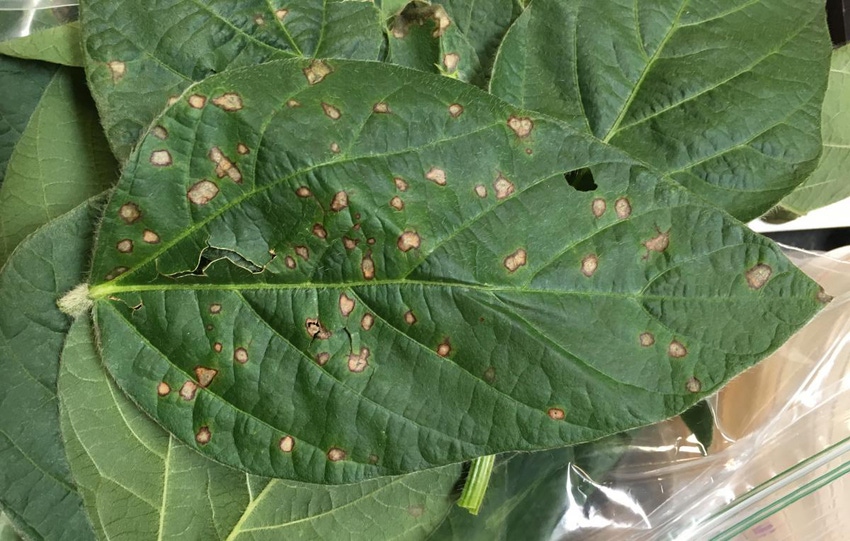February 24, 2018

By Loren Giesler, Extension plant pathologist, University of Nebraska
Recently Iowa State University confirmed Cercospora sojina, the pathogen that causes frogeye leaf spot of soybean, having resistance to quinone outside inhibitor (QoI, strobilurin) fungicides in Iowa.
This report is a reminder to all of us of how important resistance management is for pathogens as well as weed and insect pests. While we have not identified C. sojina to have fungicide resistance in Nebraska, due diligence is needed by all farmers to ensure practices are not encouraging resistance development. A map of the current distribution of strobilurin-resistant frogeye shows there is good distance between Nebraska and any confirmed fields at this time.
A plan for resistance management includes:
The use of genetics to reduce disease potential
Residue management and rotation to break down inoculum of the pathogen
The treatment of fields before significant levels of disease are present using fungicides with multiple modes of action.
Additional resources on Resistance Management are available on the CropWatch Resistance Management page and the Crop Protection Network. See Fungicide Resistance in Field Crops FAQs (CPN-4001).
You May Also Like




